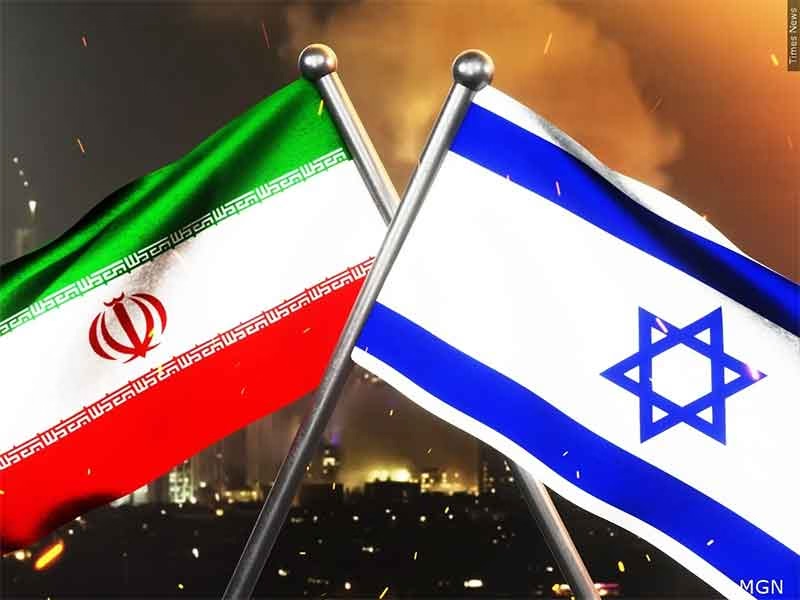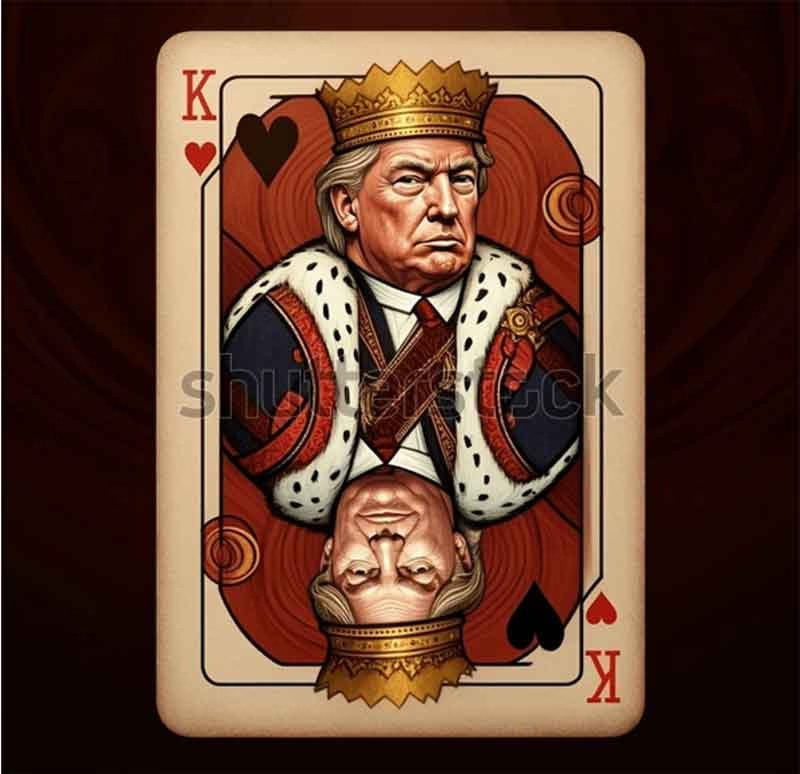
Zhou En-lai, Panchen Lama, Mao Zedong and the Dalai Lama in Beijing, China in 1955. From July 1954 to June 1955 , Dalai Lama visited China for peace talks and met with Mao Zedong and other Chinese leaders, including Deng Xiaoping.
Dalai Lama was invited to- and he did- address the NPC, China’s Parliament, including on autonomy. That was on Sep 16, 1954. An occupied country or a vassal does not get such dignified and meaningful treatment. This is covered up and obfuscated by tales about “occupation” by China.
Dalai Lama had signed an agreement with China on 27 September 1954, and he was appointed as a Vice-chairman of China (PRC), a post he held for years.
These facts of history were acknowledged by the Lama himself, in his latest autobiography (2025 March). Then the Lama, a leader of the slave-owning class of pre-liberation China, ditched the Agreement he signed. He allowed himself to be weaned away by USA, with India as its junior partner, to serve its Geo-strategic interests and the Great Game goes on for over 65 years.
This article seeks to briefly report the recent ominous developments related to Tibet, including new US legislation on Tibet, an “Act” of brazen interference. Modi-led India played second fiddle. In the name of Tibet’s self-determination, and playing the so-called “Tibet card”, the US served its own imperialist interests: That is what top CTA leaders, like Dalai lama’s own brother Gyalo Thondup, had realized, and top US officials like Albert Gombis openly stated. These were among things discussed in Part-1. This Part-2 briefly traces the modern history of Tibet, and shows that its “self-determination,” was always imperiled by imperialists, and not by People’s Republic of China (PRC), as painted by many, knowingly or otherwise.
USA and India are playing the so-called “Tibet card”, for their own strategic purposes, with Dalai Lama as their pawn. His so-called “re-incarnation in a free country”, i.e., outside China and soon, has been part of their games. USA last year passed a so-called Resolve Tibet Act, and allocated a Budget, specially for deliberate disinformation on Tibet. A notorious CIA media outlet, Radio Free Asia (RFA), has been activated, and hacks are pouring out stories on Tibet. July first week, his 90th birthday is planned world-wide, and we will see what will unfold that day.
A so-called 9th World Parliamentarians’ Convention on Tibet (WPCT) was held in Tokyo, June 2-4. 142 participants from 29 countries reportedly attended the meet, enacted by the Govt-in-exile, the CTA, illegally hosted by India for over 65 years. Another QUAD ally, Japan provided venue in its parliament House. East Asia was already hot, with Trump pumping in more arms to Taiwan, in violation of the One China Policy. Israel’s aggressive, all out war against Iran, openly backed by Trump amid warnings that Iran must “surrender,” and endorsed on June 17 by the current G-7 meet in Canada as “Israel’s Right to defend itself” is ominous.
Even as many Buddhist cults oppose the very concept of “reincarnation”, Dalai lama announced his Reincarnation would be soon in “free world”. Inglorious past of Dalai Lama, as a US pawn, has been discussed in counter currents, in a series of articles, including the latest.
See Part-1 :
American imperialism plays up the “Tibet card”, with Dalai Lama as its pawn, and harps on his “re-incarnation in free world” (published on June 10, 2025)
*** ***
Tibet is presented, by USA India and allied lobbies, as if it is victimized, and “primarily” by PRC. What are the facts?

World map of member countries of the United Nations in 1945 (courtesy: Wikipedia). Tibet was shown as part of China, then ruled by Chiang kaishek regime. The Kuomintang-ruled ‘Republic of China’ was a permanent member, with veto power, of the Security Council .That pro-US clique was defeated by Communists led by Mao, and People’s Republic of China (PRC) was established in 1949 October. There was no change in the status of Tibet; only its social system was changed by the communists : It was liberated from serfdom and slavery, and welcomed by 95% of Tibetans, then and now .
Tibet was not a member of League of Nations (1920-1946), formed after World War I. Sun Yat-sen played a crucial role in overthrowing Qing dynasty in 1912, and in establishing the League. His nationalist, Republican govt had recognized Tibet as part of China only. There was an anti-imperialist struggle, firstly against Japan and later against USA represented by its compradors in KMT.
Tibet discussed in UNO, in 1951
“Modern” world as we see it, evolved in the imperialist era, and the present world political map took shape particularly after WWII. Then Tibet was not recognized as independent by pre-1949 dynasties and rulers of China. Tibet has been part of China for centuries, under various feudal dynasties. America and its proteges like KMT of Chiang kaishek, and Taiwan (even today) always recognized Tibet as part of China.
Tibet’s status and relations, from 1913 to 1950, vis-a-vis the imperialists, UK and later USA, are under-played or avoided in Western propaganda and only PRC is mentioned explicitly, so as to tarnish its image and show it as a communist ghost that “occupied” a Buddhist country.
The fact is : Tibet only continued to be part of China led by the Communist Party of China (CPC). It is not as if communists newly annexed Tibet. They only abolished centuries-old serfdom and slavery presided by the Dalai Lama, who himself in 1954-55 approved and accepted the social change.
Even after 1950s, KMT and later Taiwan regime, as also USA, never recognized Tibet’s independence. That is so even today.
Thus when Tibet was first discussed in UNO in 1951, the UN “deferred discussion” on the pretext of Tibet’s “unclear status,” and “because of China’s overwhelming power, ” wrote a ‘champion’ of Tibet, Dr. Yeshi Choedon, (Prof of International Politics, of JNU, in Frontier 2025 March 16-22). That “overwhelming power” ROC and the USA then called the shots, and PRC itself was not even a Member in UNO. The learned professor omitted this fact.
A rejoinder titled, Tibet: canards and facts, by this author, was published in the Frontier, May 11-17. It is a “must read” for any discussion on the issue.
PRC was admitted into UNO only in 1971, and before that the ROC led by pro-US KMT was in UNO and that too as a permanent Member of Security Council, with veto powers, thanks to the US and the West. They were the powers that handled Tibet, whose history in the modern world is briefly mentioned below.
*** ***
- Tibet as an aggressive and oppressive power
Historically, Tibet was not an innocent and weak victim of communist China that “occupied” Tibet, as often presented by authors and the media under western influence. It was an aggressive power that had militarily occupied and sought to subjugate other countries, nationalities and ethnic groups, including Nepal, Sikkim and Bhutan.Thus it is acknowledged in history: “Tibetan Buddhist leaders, including the Dalai Lamas, had played significant roles in both spiritual and temporal matters, sometimes leading to military conflicts and territorial disputes.The interplay between Tibetan Buddhism and the region’s politics has been complex, with instances of Buddhist leaders engaging in military activities and expansionist policies.”
During the same ‘modern’ period, the French colonialists, backed by USA, were desecrating and looting Buddhist monasteries in Vietnam. The same thing happened in Kampuchea too. The imperialists in Indo-China were resisted by Buddhists, along with the Vietnamese Catholics, who allied with Communists led by Ho Chi Minh. In Kampuchea too, the communists (Khmer Rouge) had allied with Buddhists, and a few Christians too. The Tibetan Buddhist lamas chose to be servile. These colonial depredations were not presented as suppression of Buddhists by colonial powers. Only China led by Mao was branded as anti-Buddhist.
But overwhelming proportion (95%) of Tibetan people rejected this slander, and united with communists. That was how the Battle of Chamdo was victorious, with mass support. China’s PLA captured the Chamdo town, in Tibet, and it was a decisive turn.
2. Communist Party of Tibet (CPT)
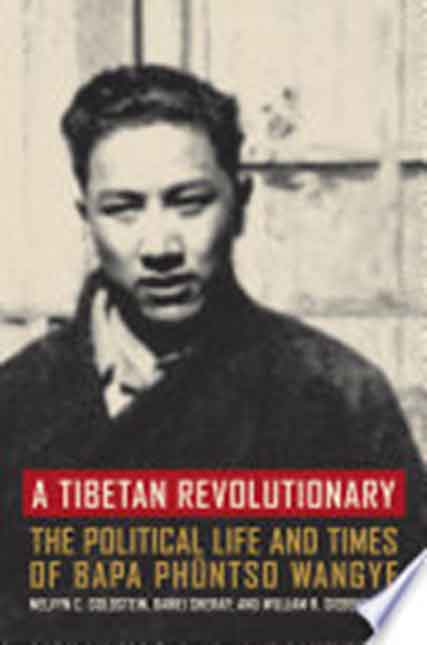
Phuntsok Wangyal Goranangpa (1922-2014), Founder- Leader of the Tibetan Communist Party (CPT) which was merged with CPC in 1949 after People’s China was founded. Phunstok had escorted Dalai Lama in 1954, and participated in the Lama’s meetings with Mao, Zhou, Deng, Zhu De and other veterans. He died in Beijing at age 92. In the 1950s, Phüntsok was the highest-ranking Tibetan in the CPC. (cover page of Biography & Autobiography – 371 pages, as told to Melvyn C. Goldstein, University of California Press, 2004).
It is not as if the PLA occupied a passive Tibet.Tibetan Buddhist Lamas had an army, supplied with British arms, that fought the communists but were defeated thanks to mass support communists enjoyed. Communists in Tibet had initially set up a communist youth league by 1939, and a CP of Tibet was established by 1943.
Chiang kai shek of KMT had claimed Tibet as part of China, and CPT resisted the compradors of USA. The Comintern was helping and guiding communists across the world, including CPT, it is well known, to counter imperialists and to advance national liberation and revolutions, against feudalism too. CPT had fraternal relations with CPC. Post-war, the CPC and CPT, both were fighting the Kuomintang (KMT) regime that was backed by USA.
That was like in Telangana where the party was established around 1939, and launched struggle against the Nizam; he had claimed that Hyderabad was an independent country, though the British controlled it, with a cantonment and a Treaty of Subsidiary Alliance of 1800.
Tibet too had subservient treaty relations with the British, like Conventions of Lhasa (1904) and Simla (1914); the latter divided it into Outer and Inner Tibet. Dalai Lama in his latest book (Voice for the Voiceless, 2025) refers to Phunstok Wangyal, who was one of the key founders of CPT. See this extract from Dalai lama:
“ I came out of that meeting impressed with Mao (September,1954) and encouraged at the possibility that things could improve in Tibet. With me in the car was Phuntsok Wangyal, a rare Tibetan Communist, who was my official interpreter during my stay in Beijing. I was so relieved that this first meeting with Mao and other Chinese leaders went well. In fact, I hugged Phuntsok Wangyal and told him that Mao was truly unlike anyone I had met. The success of this first meeting also reassured my Tibetan entourage, including especially my senior tutor, Ling Rinpoche, who had been feeling quite worried about me. Phuntsok Wangyal was a true believer in Communism in its original Marxist internationalist sense.” (Frontier, Vol 57, No. 43, Apr 20 – 26, 2025.)
During Cultural Revolution, like so many including Deng, Wangyal was purged, but later politically rehabilitated in 1978, like so many like Deng himself. Later, he was offered the position of Chairman of the Tibet Autonomous Region government, which he declined.
Wangyal began his activism in school, where he founded a secret Tibetan Communist Party. He was expelled (externed) from Tibet in 1940, and for the next nine years he worked underground to organize a guerrilla uprising against the Chinese KMT who controlled his homeland.
The CPT was secretly working among Tibetan people during 1939-49 period, and Tibet was liberated by PLA, with the support of the people oppressed by slavery and serfdom.
‘The strategy of the Tibetan Communist Party under his leadership during the 1940s was twofold: Influence and gain support for his cause among progressive Tibetan students, intellectuals, and members of the powerful aristocracy in Central Tibet in order to establish a program of modernization and democratic (i.e. socialist) reform, and wage a guerilla war against the rulers. For some time, Wangyal lectured at Tromzikhang on Barkhor square in the 1940s when it was used as a Republican school.’ (Wikipedia.)
The CPT was working against British imperialism.
By Anglo-Tibetan war of 1888, Britain had seized control of Sikkim, till then a protectorate of expansionist Tibet.The British had invaded Tibet itself: the military expedition by Col Francis Younghusband, had imposed a Lhasa Convention of 1904 (signed on Sep7, 1904). By that Tibet had to allow trading rights to UK (It was rather like East India Company in India.) And Tibet was reduced into a British protectorate. It was rejected by China and the Convention was renegotiated in 1906. By that UK conceded China’s suzerainty over Tibet. It was like a British concession in China.
Subsequent Simla Convention (1914 July) divided Tibet into Outer and Inner Tibet. Outer Tibet will have autonomy but under China’s suzerainty. Inner Tibet comprised of areas (like provinces of Qinghai, Gansu, Sichuan and Yunnan) that are part of China, which would have total control over them. And NEFA (today’s Arunachal Pradesh) would be out of the purview of the Simla Convention, i.e., that was sliced off and made part of British India. Though Simla Convention was contested and repudiated by China, the fact remains that Tibet was vivisected and had lost whatever status it had earlier.
Tibet under the Lamas could not and did not resist these British expeditions and plunder.
The feudal Buddhist Lamas, who constituted 5% of Tibet’s population, wined and dined with imperialists (yes, they are permitted to wine, as acknowledged by the Dalai lama). But they exploited, oppressed and starved the serfs as slaves (who constituted 95% of Tibet’s population).That was old Tibet, a paradise for Buddhist lamas, and a nightmare for the oppressed!
CPT had relations with Comintern and CPC, actively worked for a decade, and was planning an uprising in Tibet. CPT was working more actively in Tibetan regions including Kham, Amdo (present Dalai lama was born here, in Gelugpa cult), both of whom had distinct national, linguistic, cult (sect) characteristics that are different from U-Tsang; the last of whom dominated the Tibetan kashag govt of the serf-owners led by lamas.
The CPT was working to convince old Tibet authorities about (anti-feudal) reforms, resisted by Tibetan elite classes. Tibet Kashag govt led by Dalai Lama had banned CPT, persecuted communists, and “expelled” (externed) all Chinese and communists in Tibet in 1949. That was the context when China’s PLA defeated Tibet ruling classes in the battle of Chamdo in Oct 1950.
Wangyal played an important role in the party’s administrative organization in Lhasa and was the translator for the young Dalai Lama during his famous 1954-55 meetings with Mao Zedong. In the 1950s, he was the highest-ranking Tibetan official within the Communist Party in Tibet.
Thus Tibet was ravaged, invaded and vivisected by the British.It was communists, the CPT, who fought against imperialism and for Tibet’s independence or self-determination. Like so many Republics had joined USSR, Tibet too joined China. Once revolution was consummated, CPT had merged with CPC in 1949.
*** ***
3. It was not Tibet’s “occupation,” but Liberation by PRC in 1950 Oct
China’s PLA defeated Tibet’s ruling classes in the battle of Chamdo in Oct 1950, as part of the campaign to liberate entire China that was a semi-colony with enclaves of Japan, USA etc powers that clashed in WWII. Tibet itself was invaded and subjugated by the British. That was the period (1946-54) when, after Japan was routed, the French colonialists in Vietnam (and Indochina) intensified their war against communists fighting for liberation. And Korea war flared up (more on it later). Post-war, the neo-colonial power US was joining forces against communism in the East.
What was the situation and context then in Tibet? Tibet claimed to be neutral but hobnobbed with America and the West. Some among the Tibetan elite had tacit ties with Japan too during war. PRC asserted its sovereignty over Tibet on Jan1,1950, and engaged Tibetans in talks at Kalimpong (now in Bengal) in March 1950, and invited Tibet to come to Beijing for talks in 1950 Sep, which Tibet refused. Then began the Battle of Chamdo on Oct 5,1950, against the Tibet rulers.
US Ambassador Henderson had informed Tibet rulers in Jan 1949 that USA would help Tibet as against PRC, but more indirectly, as it formally recognized Chinese (KMT’s) suzerainty over Tibet. In a diplomatic double-dealing, USA avoided Security Council where Russia had veto power, and approached UN General Assembly which, on 18 Nov 1950, under US and Taiwan (in UNSC) influence, “condemned” communist China on Tibet question. But that did not help Tibet’s ‘independence’, because USA was behind ROC that claimed Tibet as its own. USA never helped Tibet, but the Lamas tailed it.
All this however could not check PLA, which had the support of Tibetan people and the CPT, which is often omitted in all the narratives.
*** ***
4. The international context of Battle of Chamdo, and the Korea war
Tibet has been part of US’ efforts to contain communists, China in particular, now as then:
The Korea war – in which there were 2 to3 million casualties, including 1.5 m of North Korea – had started in 1950 June, and by Sep 15, US forces made a direct entry, and invaded North in Oct, captured Pyongyang too. US and allies deployed almost 1.8 million troops, apart from 1.3 million of South Korea. US had considered using Nuclear weapons against China. It was likely going towards reigniting a Third World War. On Oct 19, China entered Korea war and reversed the offensive led by USA. At around the same time, the Battle of Chamdo (Oct 5 to 24, 1950) was launched and won by the Red army led by Mao. On Oct 19, China PLA captured the Chamdo town, and it was a decisive turn.
Tibet army by 1936 had 5000 regular troops armed with British arms, plus 5000 militia, armed with older models of rifles. By 1950 Tibet had acquired heavy arms including cannons and advanced machine guns, supplied by British who also trained and modernized them, and was advised by Charles Alfred Bell etc.
Thus the Battle of Chamdo was part of an anti-imperialist, anti-feudal revolution led by CPC. Tibet was not “occupied”, but liberated as a result.
As the older imperialists were defeated, neo-colonial USA stepped in, in Indo-China, Korea, Taiwan. The ‘Tibet card’ was used by USA, as part of a larger strategy, in those years against China, as it is now. Some Tibetans kept relations with Japan too.
China had joined war along with North Korea as America crossed the 38th parallel, as forewarned by China. America saw no victory was possible, and stopped. An Armistice agreement was signed in July 1953, and it was a ceasefire that created a (DMZ) Demilitarized Zone in Korean peninsula. However, a formal peace treaty was never signed, and technically a state of war still exists between Koreas. Efforts were made to turn it into a denuclearized zone. But USA thwarted all such efforts. Finally North Korea made efforts, began nuclear tests in 2006, and in 2022 it declared itself a nuclear power.
Despite setbacks in the Korea war, the USA still conspired and deployed nukes in S Korea by 1958. Truman dispatched Seventh fleet to Taiwan in 1950 June. General Mac Arthur, as Supreme Commander of UN forces (yes, UN forces, that was a US ploy) considered using Nuclear weapons against China and indeed submitted a list of targets for nuclear strikes. In 1953, President Eisenhower also seriously contemplated a nuclear attack, to force China into a settlement. Declassified documents showed these plans were indeed discussed by USA. But Mao was defiant and saw USA as a “paper tiger”.
Now the USA, even under Trump mouthing peace, is itching to foment trouble in Asia, so as to “contain” China. Trump has re-activated the “Tibet card”, and is heavily arming Taiwan. It has created a military tech partnership, the AUKUS, to draw in UK, old master that had invaded Tibet. It has created QUAD, to rope in Australia and Japan, and to draw far away India into its Asia Pacific strategy against China.
Tibet question needs to be viewed in such context of American designs in Asia.
It was in that context that Chinese leadership contemplated reforms, essential to dis-empower the slave-owners of Tibet, among others.
Thus now the USA wants “re-incarnation” of Dalai Lama, soon, as he is getting too old, and that, outside China. It carries its great game into coming decades.
NEFA region (North East Frontier Agency, now called as Arunachal pradesh) was part of British India. It was south of Macmahon line, and Tibet formally contested British claims, even as it received UK’s help to counter communists and later PRC.
It may be mentioned that even Tibet Govt-in-exile (CTA) and Dalai Lama deemed Arunachal (Zangnan in Chinese) as Southern Tibet, and not part of India. This continued until less than 10 years ago. Taiwan even today says so. Still India entertained the CTA and the Lama, violating all cannons of international law.
*** ***
5.Dalai Lama signed an agreement, ditched later, with China to “drive out the imperialists”

Tibetan plenipotentiaries signing the 17-point agreement with China led by Mao. “Agreement between the Central People’s Government and the Tibetan Local Government on Measures for the Peaceful Liberation of Tibet.” Signed on 23 May 1951, confirmed by Dalai Lama, and formally ratified on 24 October 1951, after extensive consultations among the Tibetans.
Both parties agreed : “The Tibetan people shall unite and drive out invading imperialist forces from Tibet; the Tibetan people shall return to the big family of the motherland – the People’s Republic of China.”
That was to consolidate and stabilize the situation after the Battle of Chamdo.
The Tibetan government convened an “official meeting” from September 26 to 29, which included all monks and lay officials, abbots of the three major monasteries, and officers of the Tibetan army above the rank of Jiaben, totaling more than 300 people. The meeting approved the statement presented to the Dalai Lama: “The signed 17-point agreement will be of great benefit to the Dalai Lama’s great cause, and to the Buddhist teachings, politics, and economy of Tibet. It is unparalleled, and should be followed and implemented.”
The Dalai Lama had stated that the Tibetan local government, ecclesiastic and secular folk, unanimously support the agreement, and will actively support the People’s Liberation Army in Tibet in consolidating national defense, drive out imperialist influences from Tibet, and safeguard the unification of the territory and the sovereignty of the Motherland.
Thus Tibet became an autonomous territory of PRC.
On 27 September 1954, the Dalai Lama was made as a Vice-chairman of China (PRC), a post he held for years.
But the Lama ditched the Agreement he signed, and allied with imperialists.
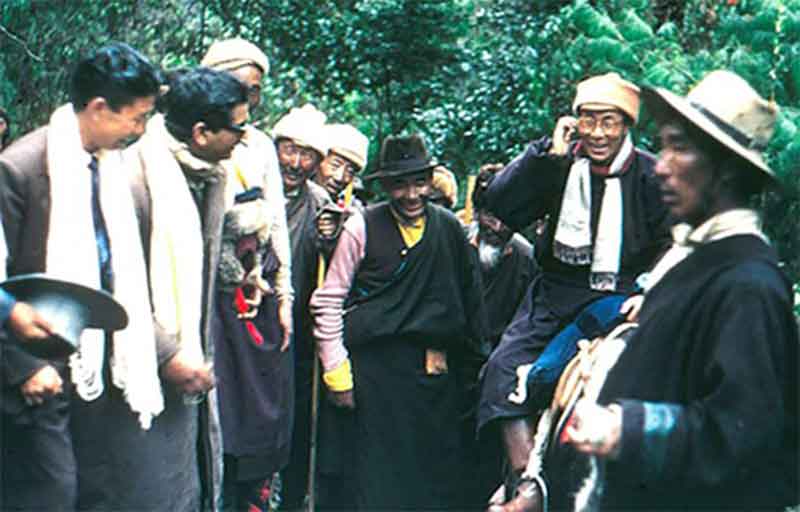
On March 31, 1959, the 14th Dalai Lama (on the horse) arrived in India after fleeing Tibet following the 1959 Tibetan armed uprising, that was suppressed by PLA. He crossed the border at Khenzimane, near Tawang, and was immediately granted asylum by the Indian Prime Minister, Nehru. It was all arranged with CIA’s help. (photo courtesy: claudearpi.in)
Thanks to India’s support, America had designed conspiracies for decades to come. Autonomy is only a ploy, only a first step:
“ The five-fifty is a win-win strategy as it calls for renewed efforts to seek genuine autonomy for the Tibetan people in the next five years while strategizing to strengthen and sustain the Tibetan movement over the next fifty years,” CTA chief Lobsang Sangay had said recently. Obviously, the USA would not allow a solution, and the Lama aged 89 is roped in. CTA (the illegal Govt-in-exile) would continue the tasks assigned:
A notorious CIA media outlet, Radio Free Asia (RFA), on March 7 revealed the task: “Tibet’s struggle for autonomy in China is ‘one of the front lines’ in America’s battle with the Chinese Communist Party,” said Albert Gombis, a senior US State Department official, on March 4, at a function in USA, marking Tibetan New Year. Gombis was frank: “US national security was “inextricably bound to the battle of ideas and influence” with Beijing. Gombis, now in Trump team, was “calling for a renewed American focus on Tibet”. The goal was clear, “ to counter Chinese, such as its expansionist claims on the South China Sea and Taiwan”.
If Dalai Lama ditched his agreement with China, the USA ditched Tibet cause, it was “betrayal”, said Dalai Lama’s brother Gyalo Thondup
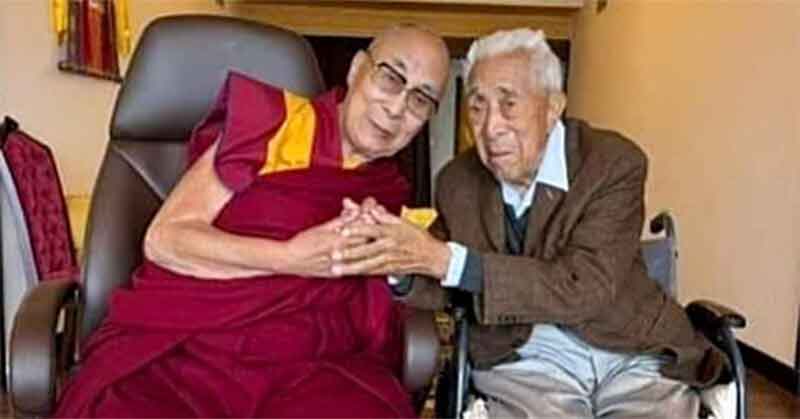
Gyalo Thondup (1928-2025 Feb 8), elder brother and Advisor to the Dalai Lama and a top leader of CTA (Govt-in-exile), during a visit to Sikkim in December 2023. He died Feb 8, aged 97, in Kalimpong, India, where he lived for long. (Photo: savetibet.org)
Through the 1950s and 1960s, he worked with the Central Intelligence Agency of the USA, in its campaign to use armed Tibetan rebels against China. In the late 1950s and early 1960s, the CIA provided an estimated 700,000 pounds of rifles, ammunition, grenades, and radio equipment, and airdropped them into Tibet, all in vain. Thondup helped to negotiate the Dalai Lama’s safe passage to India in 1959. After CIA’s support of the Tibetan resistance formally ended in the 1970s, he often acted as the Dalai Lama’s unofficial envoy to China and attempted to negotiate his return.
Following his death in 2025, The Washington Post said Thondup was “arguably the second-most important figure in modern Tibetan history”, viewed by many governments around the world as a de facto political leader of Tibet. Invited by China, and with the permission of the Dalai Lama, Thondup met Chinese leader Deng Xiaoping in 1979 for peaceful political talks, and a series of exchanges took place. They were never liked by USA. He also had a direct role in the Tibetan government in exile, having handled foreign affairs in the 1960s and becoming the chairman of the Kashag (Cabinet) in the early 1990s.
Vexed by such policies that drew Tibet into the cross-hairs of American strategies, over the decades, even pawns of USA were getting frustrated. Thondup stated that the ‘United States did not genuinely help the Tibetan cause and instead primarily served its own strategic interests during the Cold War. He indicated that the US focus was more on using Tibet as a pawn against China.’ In the last interview before his death, Thondup “evinced no doubt in his sense of the disappointment and betrayal he felt” reported Radio Free Asia, a CIA voice, Feb 10, published after his death.
Earlier too Thondup lamented that the USA always exploited Tibet for its own global strategic interests. Despite such experience, the Lama never became independent, remained a US pawn, as was conformed with his latest hobnobbing with USA during his 2024 June- August visit to USA.
*** ***
6. Dalai Lama recounts his meeting with Mao: That led him to become the vice-president of China
These are all incontrovertible facts of modern history. Thus Tibet was not newly “annexed” or “occupied” by PRC. It is a travesty of truth to say so.
The following is how the Dalai Lama himself recounts, in his new autobiography, Voice of the Voiceless(2025), his meeting with Mao 70 years ago. And he describes how new Tibet became a part of New China. This is in stark contrast to how India handled Sikkim’s conspiratorial annexation in 1975. It was also different from how an imperious Trump behaved with Heads of two big sovereign countries, Ukraine and South Africa.
The Lama also recalls how he was escorted by the top Tibetan Communist Party leader, Phunstok Wangyal, to meet Mao:
“ In my role as the Dalai Lama, I was trying to mitigate the disaster for my people…So, when in 1954 the Chinese government invited me to Beijing, I felt it was the only option left to me to attempt to improve my people’s deteriorating situation. In June, I received a telegram from Deng Xiaoping, then the senior figure responsible for Tibetan affairs in the Chinese leadership, inviting me to attend the inaugural National People’s Congress in Beijing in September 1954.
“ On September 4, 1954, Panchen Lama and I, with our delegations, finally arrived in Beijing by train from Xi’an. We were received at the station by Prime Minister Zhou Enlai; Vice Chairman Zhu De, who was also the commander-in-chief of the People’s Liberation Army ..A few days later, I met Chairman Mao Zedong himself ..
“ Here we were, myself only nineteen years old and the Panchen Lama sixteen years old, in a formal meeting with Chairman Mao himself, flanked by Communist China’s most senior leaders…we felt awed and somewhat nervous..
“Mao said that he and the Central Government were very happy about my first visit to Beijing, and that the relationship between the Chinese and Tibetans was very important. He also assured me that in the future, the Central Government would make great efforts to help develop Tibet. On my part, I responded to Mao, saying I was very happy to have the opportunity to meet him and other leaders of the Chinese Communist Party.
“ The meeting lasted about an hour. As we left, Mao and other leaders accompanied us out of the house, and Mao himself opened the car door for me. As I was getting into the car, Mao shook my hand and said, “You’re coming to Beijing, is coming back to your own home. Whenever you come to Beijing, you can call on me… Don’t be shy; if you need anything, just tell me directly.”
“ On September 16, I addressed the first National People’s Congress, noting the draft constitution of the People’s Republic of China states, in particular, that all nationalities may draw up their rules governing the exercise of autonomy and separate regulations following the special features of the development so that they can exercise full autonomy. By then, I had been made a vice president of the steering committee of the People’s Republic of China.”
[from the latest book by Dalai Lama Voice for the Voiceless: Over Seven Decades of Struggle with China for My Land and My People, the Dalai Lama, Harper Collins. 2025)
(Extract, slightly edited, is taken from: Frontier, Vol 57, No. 43, Apr 20 – 26, 2025 ).
The Dalai Lama had publicly stated that he is not opposed to socialism as a Buddhist principle. And he reiterated that often.
It shows how communist China handled the question, unlike any hegemonic power.
Dalai Lama was invited to address China’s parliament, the NPC, including on autonomy. An occupied country or a vassal does not get such dignified and meaningful treatment. This is covered up and obfuscated by tales about “occupation” by China, retold by “learned” scholars.
The above is an extract from Dalai lama’s latest book of 2025. It does not indicate any coercion, alleged by imperialist forces. The fact is the Lama, of the slave-owner class, allowed himself to be weaned away later by imperialists.
That was how Tibet led by Dalai Lamas, representing the class of slave-owners, succumbed to colonialists since 1888, when the imperialist forces invaded the Tibetan region, and carried out various deceptions and provocations. The same situation continues today, when Dalai Lama, now 90, hobnobs with American imperialists, and announces his “re-incarnation” soon, outside China!
*** ***
In part-3, we shall discuss, among other things,
The Geo-strategic interests of imperialists: Why they meddle with Tibet and Xinjiang, which together constitute about 27 % of China’s land area, but are rich and strategic. And how China is addressing the question of ‘Self-determination’, and Tibet.
*** ***
Subscribe to Our Newsletter
Get the latest CounterCurrents updates delivered straight to your inbox.
Ramakrishnan is a political observer, who regularly contributed to the countercurrents.org.
A shorter version on Tibet was published in Frontier, Kolkata weekly, May 11 – 17, 2025.)
(The author is a political observer, who regularly contributed to the countercurrents.org.
See for more on the subject, by this author:
See Modi 3.0 reveals India’s subservience to the global hegemonic strategy of USA and lines up against China : Dalai Lama is a pawn in the game . CC 24/06/2024)
Dalai Lama turns 85 today and 60 years of that he served US imperialism, operating from Indian soil, playing havoc with India-China Relations (06/07/2020)
https://countercurrents.org/2020/07/dalai-lama-turns-85-today/









































